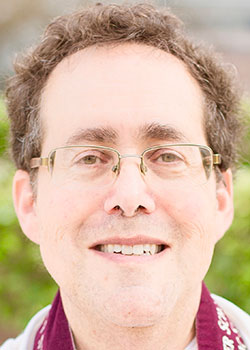Recent Weekly Torah
When Miracles Are Not Enough
Surely, this Torah reading contains some of the most dramatic and well-known scenes in all of written literature. The liberation of the Israelite slaves by God, the pursuit of the fleeing Hebrews by Pharaoh and his army, the splitting of theRed Sea, with Israel crossing safely beyond and Pharaoh's forces drowning in the waters -- these scenes indelibly shaped the consciousness of the Jewish people throughout our tumultuous history.
Read more...
With Our Young and Old
Pharaoh and Moses are locked in a conflict between two opposing world views. Pharaoh represents a civilization built upon an obsession with death; Moses advocates a religion whose followers "choose life." Pharaoh stands at the pinnacle of a society which is organized in a strict hierarchy -- a world in which everybody is assigned a place below someone else, all in the service of the state and its enormous aristocracy.
Read more...
The Importance of Playing
God once again, Moses prepares himself to enter Pharaoh's court. Raised there from childhood, and having fled the court to avoid Pharaoh's anger, Moses now returns to demand the liberation of his people. Formerly a slave to the Egyptians, and adopted grandson to the Pharaoh, Moses must transform his inner nature to stand in a new role in court. Moses is summoned to grow in stature before he meets with the earthly king.
Read more...
These Are the Names - Where is Yours?
In many ways, Sefer Sh'mot (the Book of Exodus) is the most Jewish book of the Torah. It begins with the origins of the Jewish People as a nation--newly liberated from Egyptian slavery by the God who created the Universe, led to Mt. Sinai, where that same God established an eternal covenant with the Jewish People. The remainder of Sefer Sh'mot details the content of that covenant in the many mitzvot that comprise Jewish practice and then authorizes the building of a place of worship, the Mishkan (Tabernacle) so that God can dwell amidst the Jews.
Read more...
Seeing the Bigger Picture
REMEMBER THE MIDRASH OF THE BLIND PEOPLE AND THE ELEPHANT? EACH ONE TOUCHED A DIFFERENT PART OF THE ANIMAL AND THEN DESCRIBED THE ELEPHANT BASED ON THEIR OWN PARTICULAR PERCEPTIONS. ONE COMPARED THE ELEPHANT TO A LONG, POWERFUL TUBE. A SECOND PORTRAYED THE ELEPHANT AS AN ENORMOUS BARREL. A THIRD, FEELING THE ELEPHANT'S EARS, DEPICTED IT AS RESEMBLING LARGE DRAPES. EACH PERSON DESCRIBED WHAT THEY KNEW--ACCURATE AS A CHARACTERIZATION OF PART OF THE ELEPHANT, BUT COMPLETELY MISLEADING AS A REPRESENTATION OF THE ENTIRE ANIMAL.
Read more...

